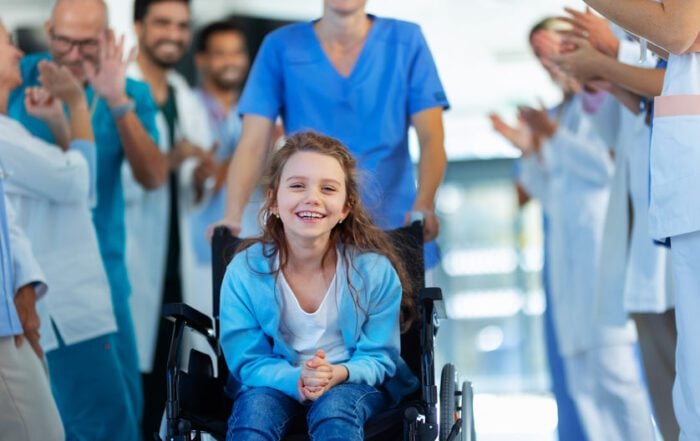Recovering From Surgery With Minimal Pain
In previous decades, a tonsillectomy was used to treat infections or inflammation caused by tonsillitis. If the condition was persistent, physicians would remove the tonsils. Today, the process is often recommended for people that suffer from extreme snoring and related sleep disorders such as sleep apnea. Adenoidectomies are most frequently performed on children and can sometimes be completed simultaneously with a tonsillectomy. The surgery removes the adenoid glands, which sit behind the nose above the roof of the mouth. Adenoidectomies are performed to help with breathing and frequent ear or sinus infections. Although some pain is expected after both procedures, proper management can lead to a smooth recovery.

Healing from a tonsillectomy
The total projected recovery time for a tonsillectomy is roughly 2 weeks for most people. The healing process is divided into stages, including the initial days immediately after surgery, within a week post-operation, and the final period. Immediately after surgery, throat pain is the most common symptom, along with bad breath, a low-grade fever, swelling in the throat, difficulty speaking, or hoarseness. The throat pain will transition into a sore throat which can persist for up to 5 days after the surgery. Finally, scabbing and bleeding are hallmarks of the end of recovery.
What about an adenoidectomy?
Recovering from an adenoidectomy can also take roughly 7-10 days. Immediately after surgery, snoring, a stuffy nose, bad breath, and low-grade fever are possible. When the procedure is performed on a child, a return to school can usually happen 2-3 days later.
Managing soreness
Both tonsillectomies and adenoidectomies are most frequently associated with mouth and throat soreness. Discomfort can also include a sore jaw or tongue. Whether an adult or child has undergone the procedure, soft foods, and fluids are recommended in the initial days. Consider popular options such as gelatin, pudding, mashed potatoes, applesauce, non-citrus ice cream, popsicles, broths, water, and non-citrus juice. Cold drinks can be ideal for soothing a sore throat. Other foods can slowly be incorporated as recovery progresses.
Can medication be taken?
The type of medication consumed may depend on the recovering individual’s age. Adults can benefit from nonsteroidal anti-inflammatory drugs (NSAIDs) to control pain. Children can also benefit from analgesics but require a specific weight-based dose, so checking the pediatrician or surgeon for specific prescribing guidelines is always a good idea. Opioids are sometimes prescribed but should be used short-term with caution.
Don’t forget to rest
Many people underestimate the recuperative power of resting. The body performs the most repair work when a person is asleep. Especially in the initial days after surgery, get plenty of rest. Strenuous workouts and activities can be temporarily put on hold until the patient feels better.
Follow the doctor’s orders
Surgery might not be the most enjoyable experience, but for most individuals that have a tonsillectomy or adenoidectomy, the results far outweigh any misgivings about the procedure. Whether because of constant infections or difficulty breathing, both surgeries can provide much-needed relief. Until an individual is fully healed, avoid spicy or acidic foods, hard and crunchy options, and high-fat dairy products. Treat the associated throat and mouth pain by staying hydrated, eating bland foods, resting, and taking medications as directed.
Recent Posts
What To Do About Hip Pain: Is It Time To See An Orthopedic Surgeon About Labral Repair?
Hip pain should not be overlooked, as the issue could be a labral tear. Symptoms like pain and instability require an orthopedic surgeon’s assessment.
ACL Repair: Will You Have Range Of Motion With Your Knee After Recovery & Physical Therapy?
After an ACL injury, ROM can be negatively affected. ACL repair surgery helps restore function, but physical therapy is essential to ROM.
Arthroscopy: What Are The Benefits Of This Minimally Invasive Outpatient Orthopedic Procedure?
Arthroscopy can help diagnose or treat joint conditions. Benefits of the MIS include faster recovery, less pain, and fewer scars.
Posterior Interbody Lumbar Fusion: What Are The Benefits Of PLIF For People With Back Pain?
People with chronic back pain may benefit from posterior interbody lumbar fusion surgery. PLIF can reduce pain and improve stability.








